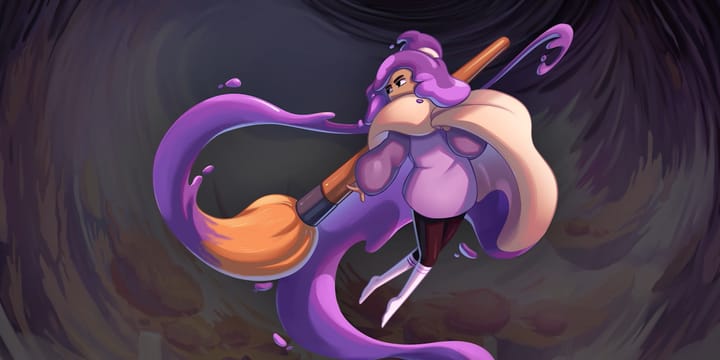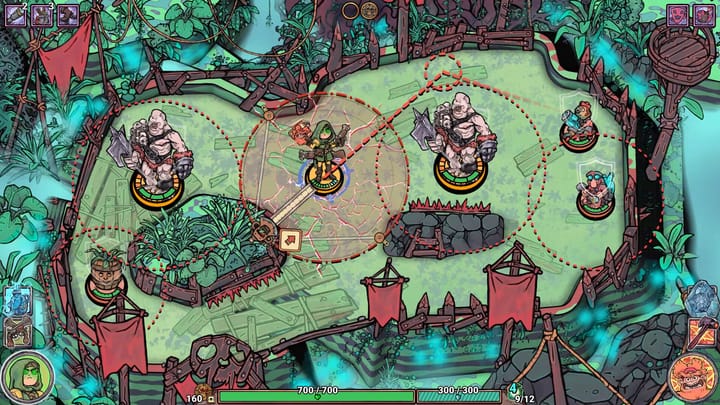"Oh you thought you'd outwitted us and managed to escape?" publisher Future Friends Games, I suspect, muttered with gleeful intent (though admittedly have zero proof to validate). "Fool! There was never just one" If you're at this very moment getting the inkling of that name ringing some sort of bell, it shouldn't come as no surprise to learn that Future Friends are the same team responsible for bringing Panik Arcade's recently-released CloverPit to the masses. Yes, that CloverPit; the most recent [delightful] bane to one's existence, wherein a few minutes quickly escalates to that of a few hours. Trapped in a near-endless cycle of definitive insanity – doing the exact same thing, hoping for different/better results.
It hasn't even been a full week since that game's release – to which the game has already garnered a large amount of favour by players over on Steam, with commendable reported sales to match – but almost fittingly in that same gambler-like mentality to let the success rise, why should Future Friends Games settle on the success of just one slot-machine based roguelike release. No: let it rise! And so, we have news of another slot-machine premise close on the horizon. Slots & Daggers, created by developer Friedemann, may lean less on the gambler notions related to slots, but that's not to say its own uniquely pixelated delivery and integrating random chance into its core gameplay loop, haven't already left a promising impression.
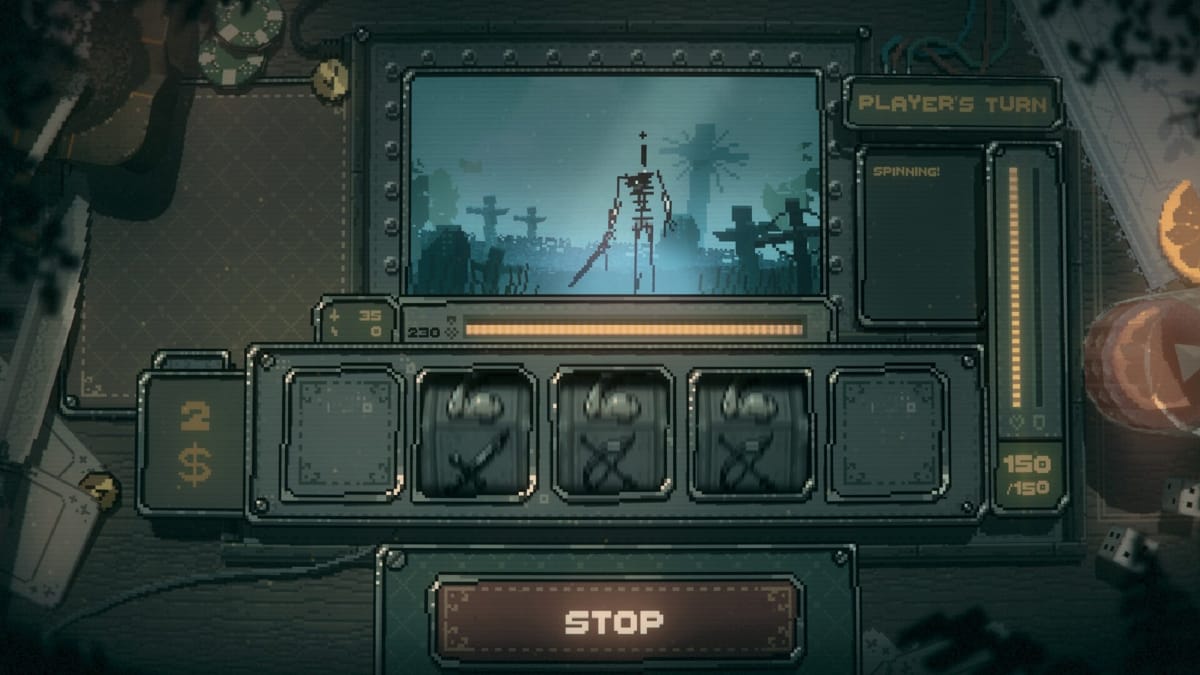
In fact, starting first with the visual/aesthetical side of Slots & Daggers is an apt reason for why one has even felt the need to talk about the release of the game's current demo. "Game-feel" as Friedemann himself has put it, is arguably one of the game's current strengths in so far as why the requirement of staring at the exact same screen-space doesn't in anyway feel stale or bothersome. Slots & Daggers does indeed come across as a game whose dedication (perhaps to the point of obsession) to the smaller details is greatly appreciated. The slight, woozy motion of the camera, the level of bloom – and further to that, much of the game's post-processing atop its pixel-art exterior – managing to hit the sweet-spot of feeling complimentary.
And then of course you have Slots & Daggers' main attire, its pixel art, which presents itself as this steampunk-like, tabletop game-within-a-game device. The minimalistic, stripped-back pixel work of its combat scenarios and ghastly creatures serving as antagonists, serving as a fitting contrast to the steely-grey, bulky, chunky presence of the game's main interface. As someone who is a sucker for pixel/sprite work aiming to evoke the bulkiness and mechanized engineering of early-20th century "technology", I can't help but likewise become enamored by the attention put into such details. Even if such enamored traits are subjective.
Even so, the cog-spinning, rotary, "chug-a-chug-a-chug" fantasy of sitting down with some hypothetical old-fashioned machinery, keeps the game's relatively restricted presentation, again, from feeling anything but tired. Slots & Daggers' isn't the most complex or dense with upfront detail, but it needn't be. Its pleasant assortment of brown, green-gray and humming electronic-yellow hues, is enough of a draw.
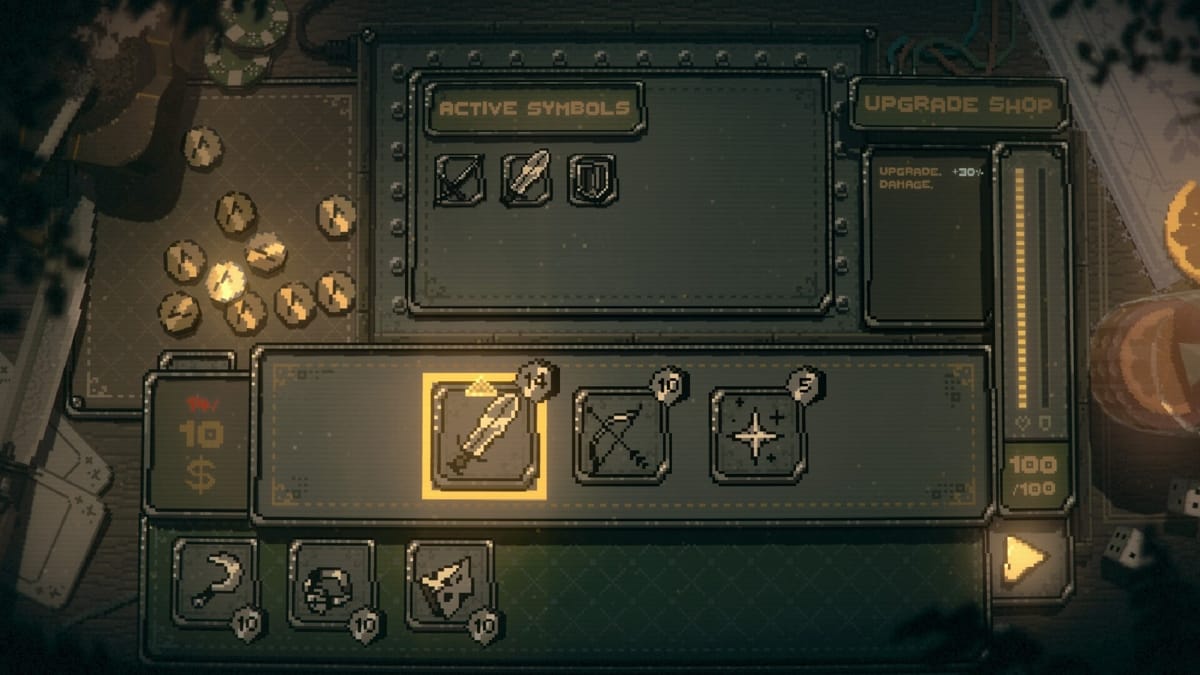
So it's onto the gameplay component of Slots & Daggers. And here we find an interpretation of random chance that, to some, may risk coming off a bridge too far when it comes to success determined by random chance, rather than a player's own skillful input. But for everyone else – where the game will find an equal number of proponents – an intriguing, ongoing dilemma on when best to hold one's ground...and when to strike.
The idea is this: there are three slots with which players control individually to determine what combination of actions you employ during combat encounters. Weapons denote an attack, shields buff your defense by applying defensive points to cover one's health and so on. As you progress on your run, you have the option of adding to one's arsenal, different categories of action and even the possibility to strengthen/upgrade given actions. Stronger attacks, better defense boosts, the amount one heals health increases etc.
But as you may have already guessed, what actions you employ during combat is entirely down to the symbols you pull. While those with an inherant knack for rhythm and syncronization will eventually find success in drawing three of the same symbol – to which there's a nice "critical" bonus to boost that action's effectiveness even further – there's no denying that praying to the high heavens that luck is on your side, becomes an all too invasive aspect. More invasive, arguably, than your usual roguelike push.
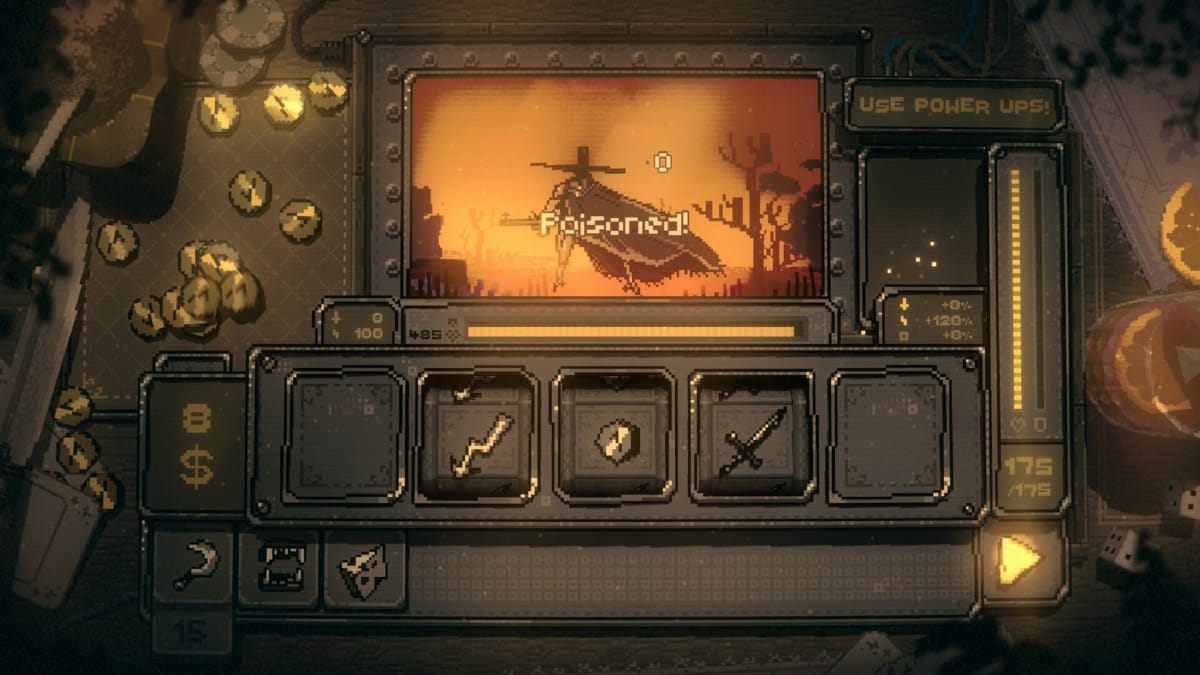
This concern grows evermore during later encounters when enemies can uttetly decimate your health/armor pull in one go. An evident call to "go on the defensive" and prioritize simply tanking the oncoming damage, but again, a strategy that is once more beholden to the random chance that you pull the desired commands. Hopefully, all three of the same type to truly mitigate and nullify what's coming. Herein lies Slots & Daggers' potential Achilles' heel. Wonderfully-realized aesthetic and presentation the game may already profess, it's how well the game can balance its increasing stakes with the realization (and acknowledgment) that players may never be able to strike back. Not through some lack of skill or knowledge of the systems at hand, but simply put: the spinning slots on display denied them so.
Indeed, it's a thin tightrope games of this ilk have to carefully tread. At what point does random chance cross the line from once feeling like an enticing risk and becomes nothing more than a road-block without some alternate detour? In the game's defense, players do ineed have some control and input, but it would be misleading to say that deciding to attack and hoping one times an input just to be able to attack...are the same thing. Will there be built-in aids, assists, upgrades or mechanics to help reduce the nusance of probability? Or to put it more bluntly: make it so that hitting the desired symbols on slots, are if not "easier" per se, more manageable? Who can say.
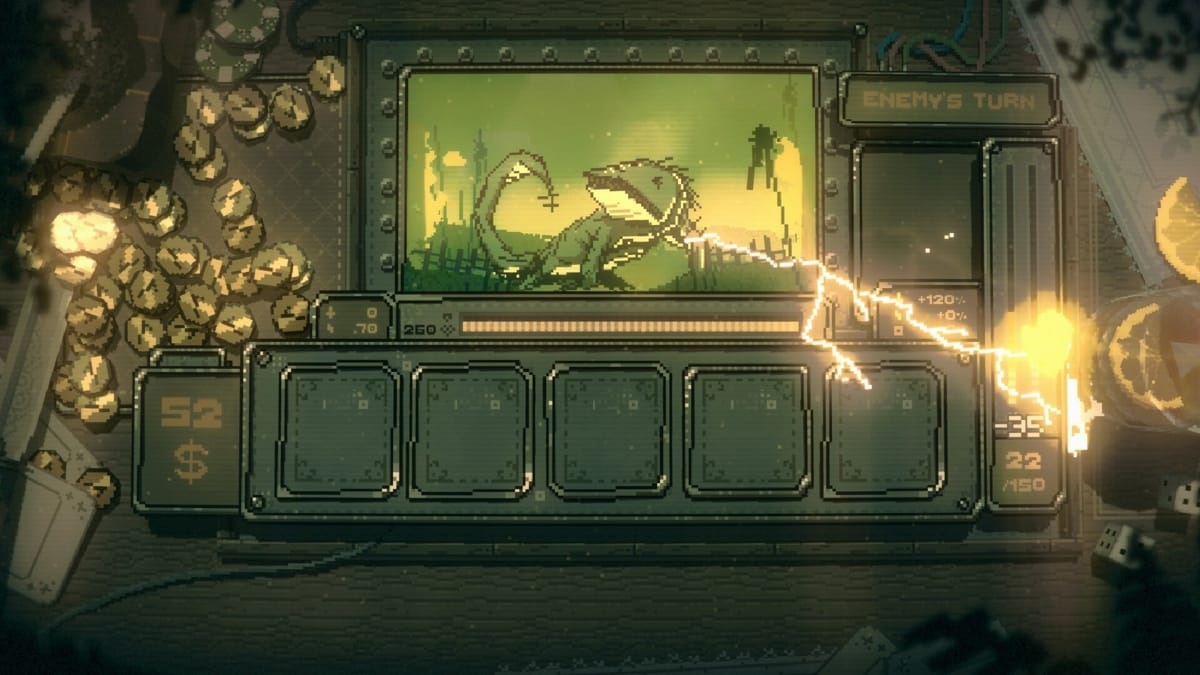
But already, from as quick and as simple a vertical slice this has been, Slots & Daggers already has the artistic forte to warrant a deeper look. A delivery and presentation style that evokes notions of old, aged (and a touch fantastical) technology and surroundings, but whose narrower scope of colour use and pixel art is no bad thing. It's in that focusing more on the details of the few – this tabletop device, its in-built screen, said device's own interface – where most of one's respect for what Friedemann has already provided here, lies. I'll be sure to keep tabs on Slots & Daggers...and for more than the [personally sad] realization I may have fallen ill to slot machine addiction, in video game form. And thanks to Future Friends Games it would seem...for the second time in so short an interval.




